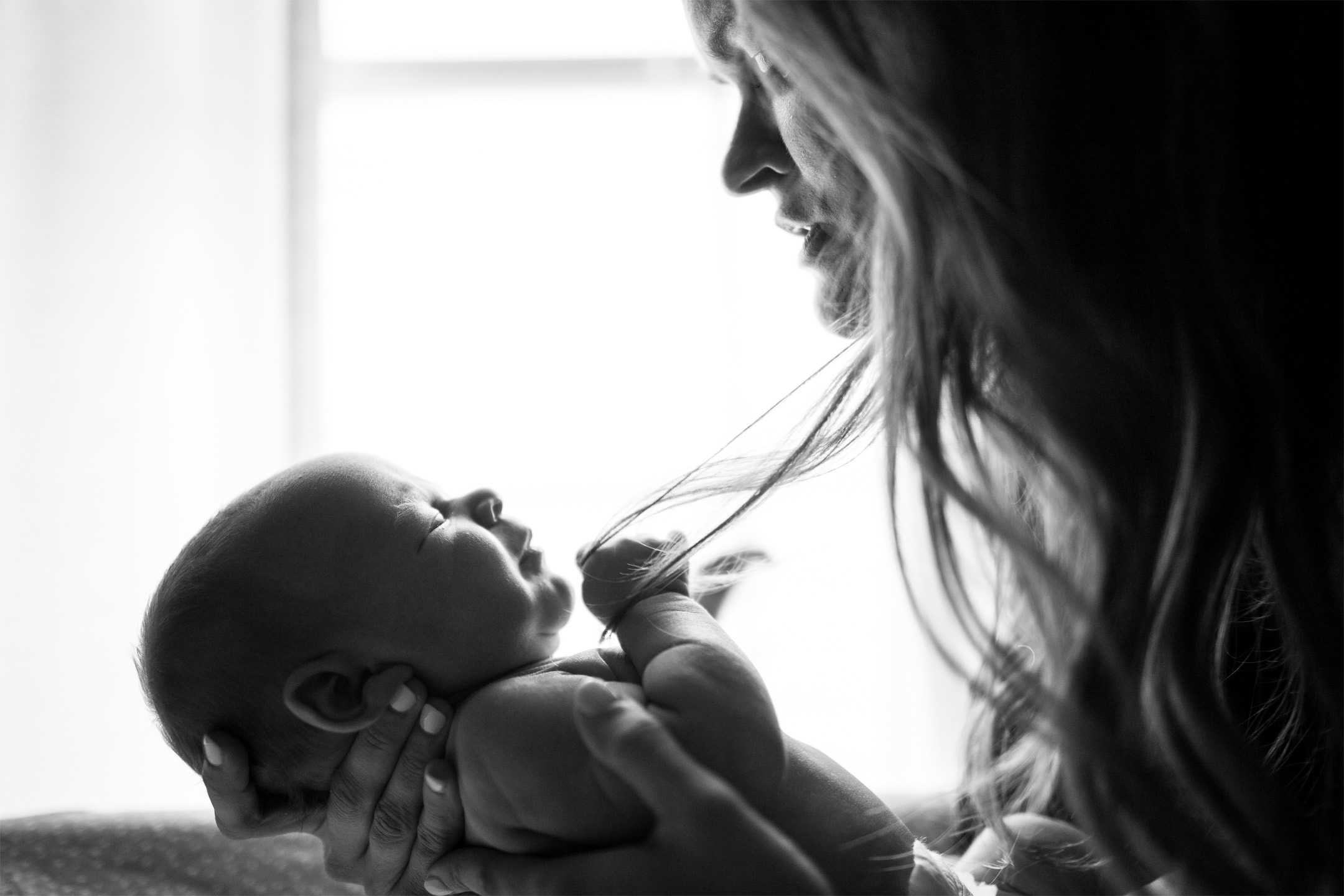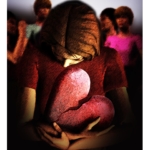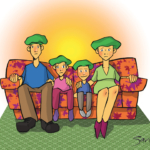
15 Aug The A.R.T Of Giving
Margaret Langdon explores stories of families with children conceived through assisted reproductive technologies and the donations of others.
About one in six Australians are affected by fertility problems. The techniques available to help these people seeking parenthood are known as assisted reproductive technologies (ART).
These technologies involve the beginning of new life under assisted circumstances. They include techniques such as ovulation induction, artificial insemination and in-vitro fertilisation (IVF). Sometimes they involve the use of eggs or sperm provided by a donor. In Victoria, the legislation that covers donor conception is the Assisted Reproductive Treatment Act 2008. The legislation that covers donor conception in NSW is the Assisted Reproductive Technology Regulation 2009.
Kylie H* already had two daughters of her own when she decided to become a donor after reading Melbourne’s Child magazine. “I was reading the farm-stay ads, looking for a holiday, but then I saw the other ads. One in particular really jumped out at me. It was the most beautiful letter – I felt for her. I woke my husband up and said, ‘Have a look at this’.”
The woman who wrote that letter and her husband are now, thanks to Kylie, the parents of a three-year-old boy. The two families have regular contact. “We have an arrangement that we will stay in touch. We visit and get the kids together once a year, have contact by phone and email, and exchange photos throughout the year.”
When the baby was born, Kylie and her family visited the couple in the hospital. “They were so happy,” says Kylie. “It was wonderful to be part of that. It’s a fantastic feeling to think that someone has wanted a child so desperately, for so long, and you’re able to help them to achieve that.”
“I feel a connection with him as if he were a close friend’s child, and adore him as I would a niece or nephew,” she says. “And we have since been on that farm-stay holiday.”
We wanted you so much.
Another couple who advertised are Eve* and Mark* who had been trying for about four years to conceive. “It seemed like an eternity,” says Eve. They now have two daughters, aged five and two, both conceived with eggs from the same donor who responded to their advertisement. The couple keeps in contact with their donor, Emma*, who sees the girls regularly.
They have also explained as much as they can to their eldest daughter. “We’ve said she’s very special,” says Eve. “We tell her, ‘Emma gave us a gift of her eggs so Mum and Dad could have you. We wanted you so much.’”
When Eve’s first daughter was born, she said it felt like the whole world had changed in a magical way. “It was like you fall in love with the world,” she says.
Mandatory counselling for donors and recipients is a requirement of donor conception.
Evelyn Zwahlen, counselling services manager at NSW-based fertility clinic Genea, says the process typically involves a session for the recipient (and partner), one for the donor (and partner), and a group session for all parties. More sessions can be arranged if needed. She says there are many issues for couples to grapple with, including whether they have grieved the loss of their own biological child, what their expectations are about the future relationship with the donor, and how and when they will tell their child how they were conceived.
Psychologist Danielle Graber Director and Principal Psychologist
12 Points Psychology, stresses the importance of thinking ahead about the donor-recipient relationship, whether it involves a known donor such as a family member or friend, or someone who was previously unknown. “There are different degrees of relationships that are available, and there are different ideas about what people want from those relationships.”
Graber suggests putting an agreement between donor and recipient in writing. “It sounds practical and cold when you are talking about such an emotional topic, but it’s very important and can stop things going off the rails later.”
While Stewart expresses interest in his biological children…, he stresses he is not their father.
Whether or not a person can access information about their donor depends on several factors, including whether the donor provided consent, when and in which State or Territory the person was conceived, which legislation applies, and whether such records are available.
Donor, Stewart C* joined the Victorian voluntary register, which allows donor-conceived children to access donor information. Stewart first donated sperm in the 1990s after having two children of his own and has helped eight families to have 14 donor children. “I have a strong belief that donor-conceived children should have access to any information they require. I’m more than happy to be contacted.”
So far, Stewart has had contact with one family who asked him to provide photos for their son’s scrapbook, which tells the story of his beginnings. While Stewart expresses interest in his biological children and would be happy to meet them, he stresses he is not their father. “The way I view it is that they are like one of my cousin’s children – there’s a genetic link between us, but I don’t have any responsibilities for that child. I feel pleased that I’ve been able to help people achieve their goal of having a family.”
When our daughter was born I was in a state of euphoria for months.
NSW couple Nicole* and James* have already told their three-year-old daughter the story of her conception. They had been through 10 IVF cycles with no success, when Nicole’s sister, who already had two children of her own, donated eggs. “We thought we would have to give up on our dream of having a family,” says Nicole. “My sister felt so lucky to have had no problems becoming pregnant, and enjoyed motherhood so much, she didn’t want us to miss out on the joys of parenthood. When our daughter was born I was in a state of euphoria for months. I could hardly believe we finally had this beautiful child who we had longed for.”
For Norma* and Joseph*, the gift of a donor’s eggs really was their last chance at parenthood. After 12 years of trying to have a family, they were both in their mid-forties when they attempted IVF with a donor’s eggs. Norma had chronic back problems and diabetes and was told to give up on her dream of parenthood. But after two attempts, Norma was pregnant. “I came home and shook,” she says. The couple now has twins – a boy and a girl who are 17 months old. “My story gives other people hope that they can still have a family,” says Norma. “How do you repay someone for that? We’ll be indebted to this lady for the rest of our lives for what she has done for us.”
We met late in life and didn’t understand the issues relating to ageing eggs
NSW couple Leonie and Adrian are in the unusual position of being both donor-recipient and donor. They realised an egg donor was the last resort after a couple of miscarriages, failed IVF cycles and time running out to conceive naturally. “We met late in life and didn’t understand the issues relating to ageing eggs,” says Leonie.
The couple advertised in Sydney’s Child magazine for an egg donor and were contacted by Liz*, who was 28 at the time. “We agreed to meet Liz and her partner and have kept in touch ever since, becoming the very best of friends,” says Leonie. “Liz is simply amazing – an incredibly selfless, generous, loving person. We can’t really describe adequately how we feel about her.” Leonie became pregnant about six months after placing the advertisement, and she and Adrian are now parents to a two-year-old boy.
The couple was so grateful for the gift they received from their donor that they decided to give to others, and Adrian became a sperm donor. His recipient is due to give birth to a daughter. “It’s very exciting!” says Leonie. “We would like to encourage younger men and women to seriously consider donating. It is one of the most selfless and rewarding decisions a person can make in their life.”
For all the stories of the donors and parents, and for all the complex issues they navigate, one thing shines through – the immensity of the donor’s gift, and the gratitude of those who receive it.
“It is still a source of wonder for me that something so precious can be given from one person to another,” says Eve. “We can’t imagine life without our daughters and yet that’s how it would be if our donor had not taken that incredible step.”
*Name has been edited





